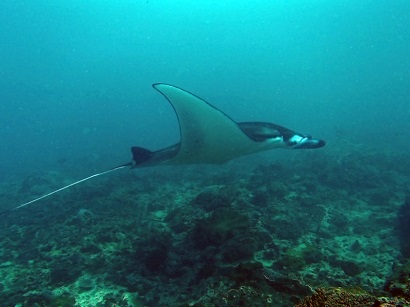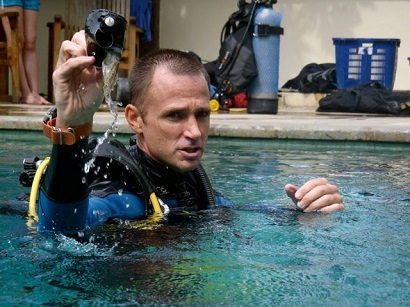Welcome back for the third installment of this article on air consumption. This time I want to focus on your finning and how it impacts your work rate underwater and therefore your air consumption.
The most powerful kick you can employ is straight leg flutter kick (moving your legs up and down) with your hips and thighs driving you through the water. Give it a go in just wetsuit and fins at the surface, really make sure your legs are straight (no bending your knees) and you will see how tiring this is! It requires a huge expenditure of energy, particularly if you haven’t been training those muscles. This is how free divers fin. For scuba divers, this kick should only be employed if you find yourself in a strong current and/or needing to get places quickly. Remember, more work equals more air.
To improve your finning focus on efficiency and technique. First, understand that the power in your kick comes from the hip and thigh muscles predominantly. Something I see a lot of is what we call ‘bicycle kicking’: divers just shuffling brought the water by pushing their knees in and out (like riding a bike). This is not sexy diving and it certainly isn’t efficient so if you’re a bicycle kicker start trying to use your upper leg to control the kick and reduce unnecessary knee shuffling. Oh and whilst we’re on the topic, if your hands are doing anything but signaling underwater then stop it now as they are nothing but training wheels. Power and direction comes from your legs and moving your whole body underwater, so if you’re doggy paddling with your hands then practice holding them together in front of you.
Most likely, you are using a flutter kick underwater – legs going up and down, kicking with bent knees as if you’re swimming the front crawl. Have a look at the photo of my brother as an example of the flutter kick (in this picture he was an Openwater diver with about 10 dives). This is the first basic kick we teach Discover Scuba Divers and Openwater students. If you’re at this stage, your first step should be to start kicking less. Constant kicking compensates for poor buoyancy by keeping you moving through the water (and it costs you more energy). Start gliding underwater. Practice giving one or two kicks and then just glide as you let the momentum of those kicks carry you. If you find yourself sinking or rising then you need to adjust your buoyancy (see part two for more info on that).
Now you’ve started gliding, move away from flutter kicking and try frog kicking (imagine yourself swimming the breaststroke with just your legs). The frog kick is what professional divers use the majority of the time. It’s a gentle kick which allows you to move slowly and calmly through the water. Remember your control and enjoyment of diving will increase as you slow things down. As well as reducing your workrate, frog kicking is also environmentally friendly as the momentum you generate with your fins is horizontal (unlike the flutter kick) so no more stirring up sandy bottoms on your favourite muck dives. The last step in refining your finning is to keep your knees bent so your legs are constantly above the torso and not at risk of hitting the bottom. This also allows you to start employing some very advanced techniques such as back-finning and helicopter turning…(we’ll have to talk about that another time). Have a look at the photo of former intern Anggli – perfect trim, hands together, fins above the torso as he frog kicks just above a sandy bottom with no disruption to the natural environment. Sexy diving in action!





